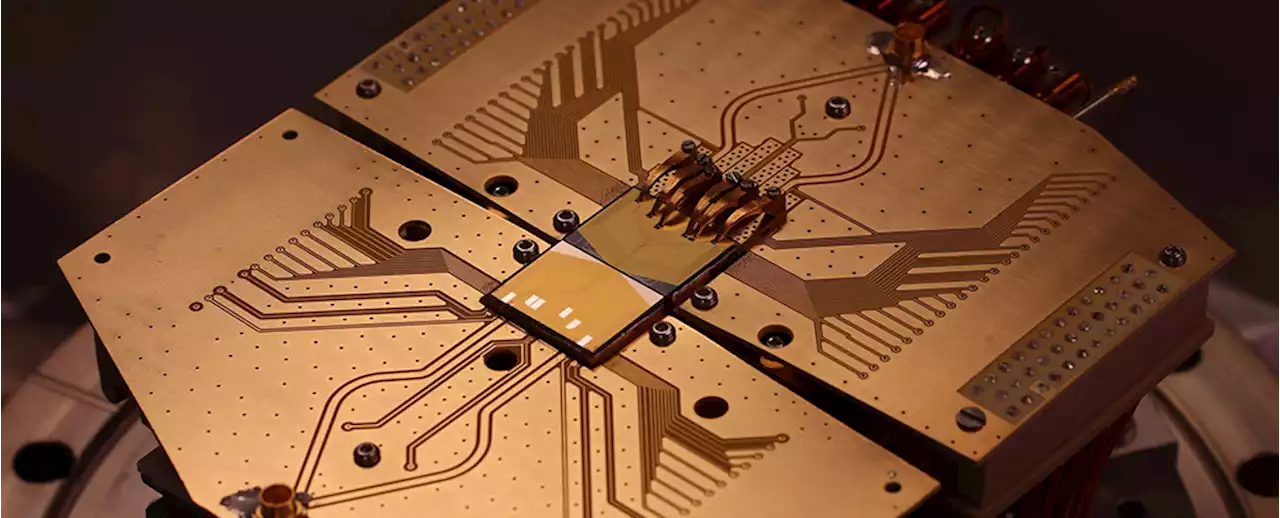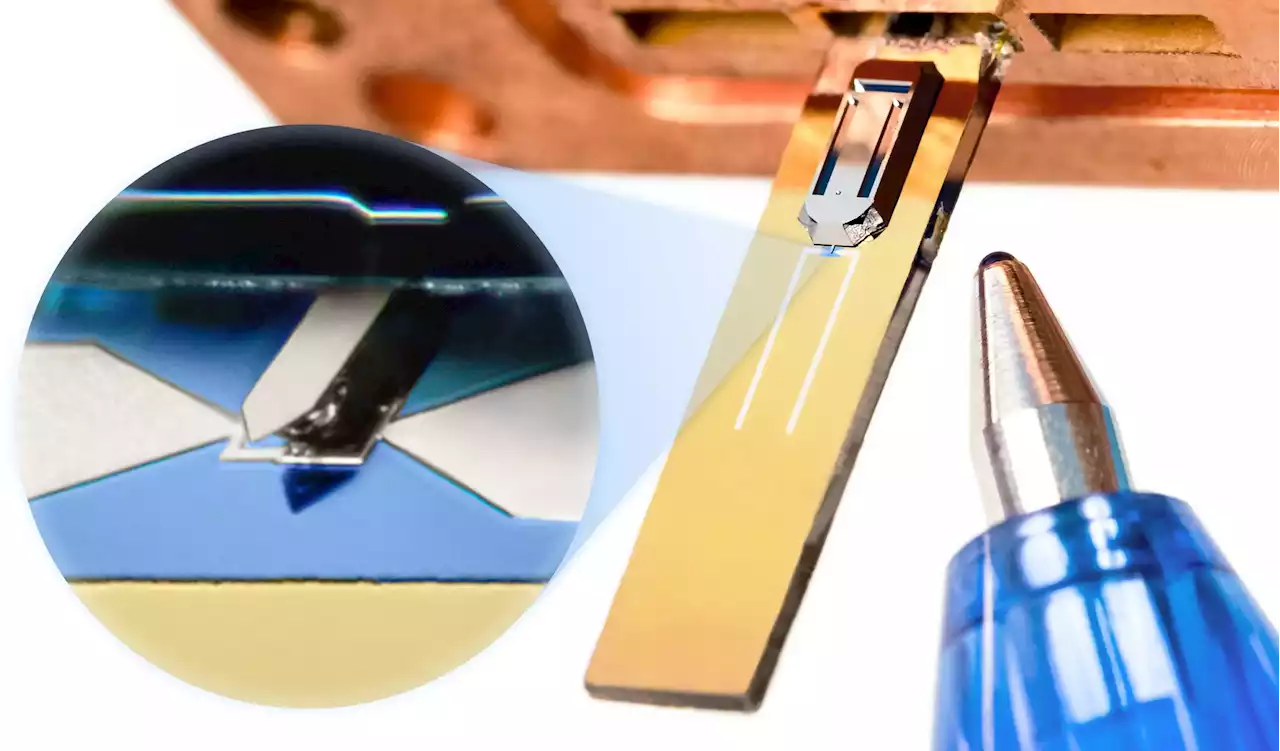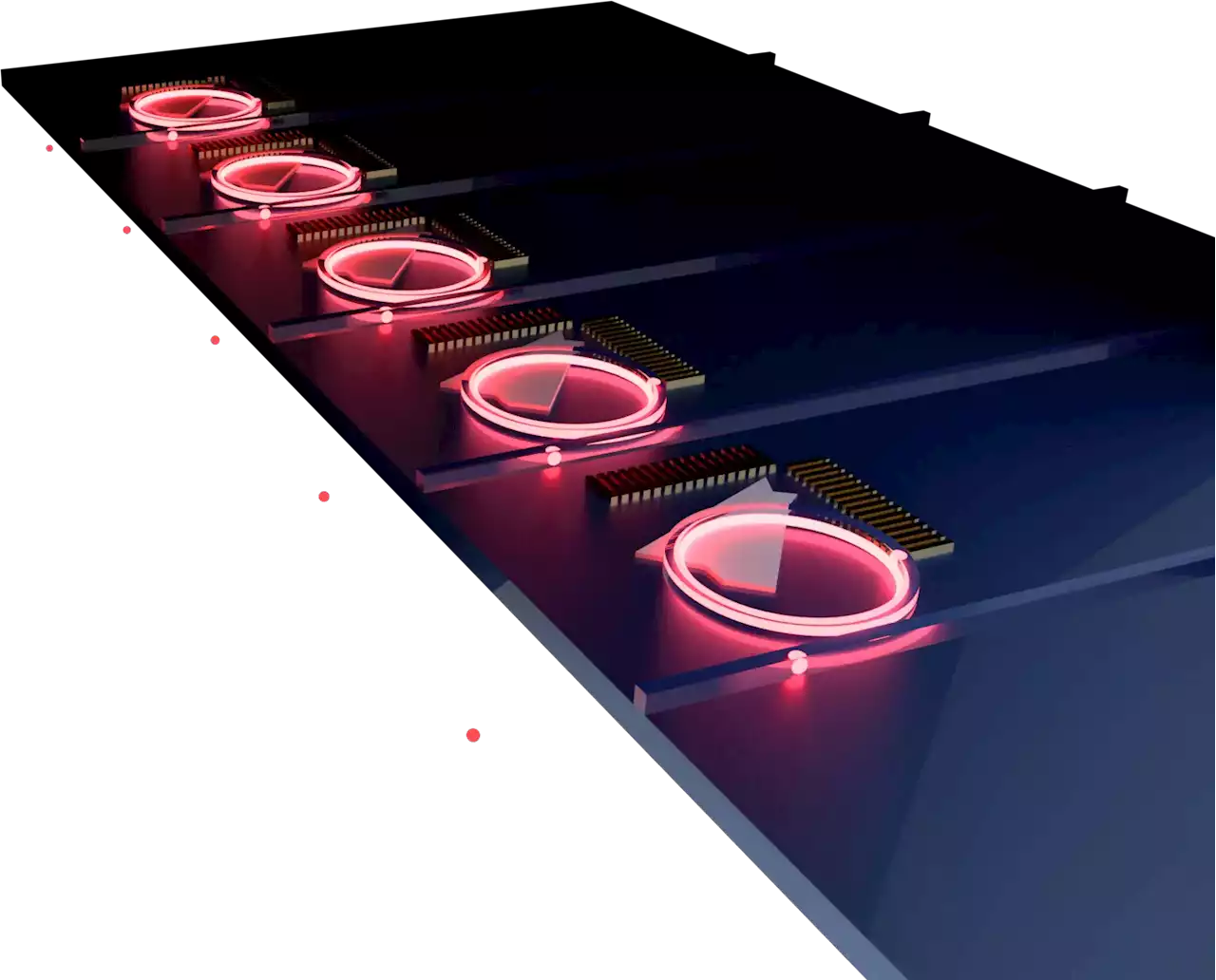The Moody Lab has created a novel approach for generating single photons on a chip. The buzz surrounding the future of quantum technology continues to escalate as researchers strive to harness the potential of super-positioned, entangled, and tunneling quantum particles. These particles have the un
An array of on-demand single-photon sources deterministically integrated with silicon-based photonics, created from the hybrid integration of 2D materials with silicon nitride resonators. Credit: The Moody Lab, UCSBThe buzz surrounding the future of quantum technology continues to escalate as researchers strive to harness the potential of super-positioned, entangled, and tunneling quantum particles.
“Quantum technology is in a similar place — we have the idea and a sense of what we could do with it, and there are many competing platforms, but no clear winner yet,” he continued. “You have superconducting qubits, spin qubits in silicon, electrostatic spin qubits, and ion-trap-based quantum computers. Microsoft is trying to do topologically protected qubits, and in the Moody Lab, we’re working on quantum photonics.
Parto explained: “If we put these single photons into many different waveguides — a thousand single photons on each waveguide — and we sort of choreograph how the photons travel along the waveguides on the chip, we can do a quantum computation.” There are various ways to go about generating single photons, but Parto and his colleagues are doing it by using defects in certain two-dimensional semiconductor materials, which are only one“If you shine light onto the right kind of defect, the material will respond by emitting single photons,” Parto said, adding, “The defect in the material acts as what is called a rate-limiting state, which allows it to behave like a factory for pushing out single photons, one at a time.
Researchers try to do that in a couple of ways, for instance, by putting the material on the waveguide and then looking for an existing single defect, but even if the defect is precisely aligned and in exactly the right position, the extraction efficiency will be only 20% to 30%. That is because the single defect can emit only at one specific rate, and some of the light is emitted at oblique angles, rather than directly along the path to the waveguide.
In experiments using the micro-ring resonator that were done for this paper, the team achieved an extraction efficiency of 46%, which is an order-of-magnitude increase over prior reports.
United States Latest News, United States Headlines
Similar News:You can also read news stories similar to this one that we have collected from other news sources.
 New Breakthrough Brings Quantum Computers a Huge Step CloserOne of the challenges of reaching the full potential of quantum computing is figuring out how to get millions of qubits working together – those quantum equivalents of the classic bits that store 1s or 0s in traditional computers.
New Breakthrough Brings Quantum Computers a Huge Step CloserOne of the challenges of reaching the full potential of quantum computing is figuring out how to get millions of qubits working together – those quantum equivalents of the classic bits that store 1s or 0s in traditional computers.
Read more »
 A New Potential Method To Treat Superbug InfectionsNew study shows how DNA components can enhance penicillin-type antibiotics to combat MRSA. Scientists at the University of Galway have uncovered a way to enhance the effectiveness of penicillin-type antibiotics against MRSA, a dangerous superbug. Their findings have the potential to improve MRSA tr
A New Potential Method To Treat Superbug InfectionsNew study shows how DNA components can enhance penicillin-type antibiotics to combat MRSA. Scientists at the University of Galway have uncovered a way to enhance the effectiveness of penicillin-type antibiotics against MRSA, a dangerous superbug. Their findings have the potential to improve MRSA tr
Read more »
 From the Shadows: A New Method for X-Ray Color ImagingResearchers at Göttingen University have devised a new technique for X-ray color imaging. Researchers at the University of Göttingen have created a new approach to generate colored X-ray images. Previously, the only way to determine the chemical composition and arrangement of components in a sample
From the Shadows: A New Method for X-Ray Color ImagingResearchers at Göttingen University have devised a new technique for X-ray color imaging. Researchers at the University of Göttingen have created a new approach to generate colored X-ray images. Previously, the only way to determine the chemical composition and arrangement of components in a sample
Read more »
 Can You Trust Your Quantum Simulator? MIT Physicists Report a New Quantum PhenomenonA recent development offers a method to confirm the validity of experiments investigating the peculiar behavior of atomic-scale systems. Physics gets strange at the atomic scale. Scientists are utilizing quantum analog simulators - laboratory experiments that involve cooling numerous atoms to low t
Can You Trust Your Quantum Simulator? MIT Physicists Report a New Quantum PhenomenonA recent development offers a method to confirm the validity of experiments investigating the peculiar behavior of atomic-scale systems. Physics gets strange at the atomic scale. Scientists are utilizing quantum analog simulators - laboratory experiments that involve cooling numerous atoms to low t
Read more »
 Quantum Leap Season 1 Episodes 13 & 14 Preview Images ReleasedWith NBC's RaymondLee-starring QuantumLeap returning a week from Monday, we have preview images for S01E13 'Family Style' & S01E14 'SOS.'
Quantum Leap Season 1 Episodes 13 & 14 Preview Images ReleasedWith NBC's RaymondLee-starring QuantumLeap returning a week from Monday, we have preview images for S01E13 'Family Style' & S01E14 'SOS.'
Read more »
 A Blast Chiller for the Quantum WorldEnhancing accessibility to the quantum properties of macroscopic objects. Through optomechanical experiments, scientists aim to delve into the boundaries of the quantum realm and lay the groundwork for the creation of highly sensitive quantum sensors. In these experiments, everyday visible objects
A Blast Chiller for the Quantum WorldEnhancing accessibility to the quantum properties of macroscopic objects. Through optomechanical experiments, scientists aim to delve into the boundaries of the quantum realm and lay the groundwork for the creation of highly sensitive quantum sensors. In these experiments, everyday visible objects
Read more »
